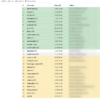A technique to induce lucid dreaming has been independently verified for the first time, and might be even more effective when combined with others. More than half the participants lucidly dreamed during the trial, a record-breaking success rate in just a week without using external intervention.
Lucid dreaming is the term given to the state where the dreamer is aware they are dreaming, and has some control over how the dream progresses. Once considered a myth, science has confirmed lucid dreams exist, and found some methods work to increase the prospects people will have them.
Nevertheless, some of these require advanced equipment, while others are far from reliable. This is unfortunate both because people enjoy the dreams so much, and they are also considered a potential tool for healing traumas and controlling unhealthy behavior. Dr Denholm Aspy of the University of Adelaide wondered whether combining techniques would bring greater success.
Aspy instructed 169 participants in techniques developed to induce lucid dreaming. One of these, reality testing, gets people into the habit of regularly checking to make sure they really are awake. Mnemonic induction of lucid dreams (MILD) has participants set alarms to wake them after five hours and recite “The next time I am dreaming, I will remember that I’m dreaming” before going back to sleep. MILD practitioners also imagine what it would be like to be in a lucid dream.
In the journal Dreaming, Aspy reports reality testing on its own produced no benefit, but of those who tried the combination of reality testing and MILD, 53 percent had a lucid…



